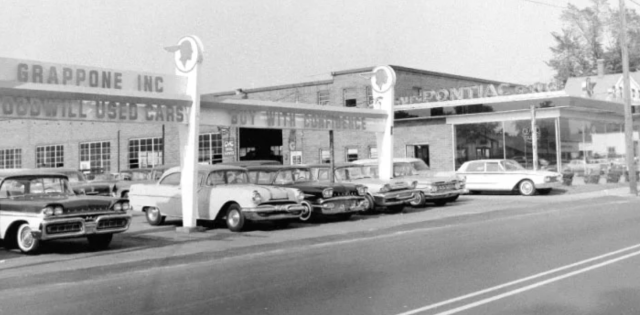The article below is sourced from Bloomberg Wire Service. The views and opinions expressed in this story are those of the Bloomberg Wire Service and do not necessarily reflect the official policy or position of NADA.
The Inflation Reduction Act is changing the way Swedish automaker Volvo Car AB plans to build electric vehicles, Chief Executive Officer Jim Rowan said in an interview this week. “The thing that it's changing is our supply base, especially on batteries and probably on minerals as well,” Rowan said. “It's driving more and more of that technology into North America.”
That’s a feature of the IRA, not a bug. In order to pass the landmark climate bill, Senator Joe Manchin, a Democrat from West Virginia, insisted on domestic assembly and sourcing requirements for electric vehicle incentives, as well as price caps for eligible cars and income limits for eligible consumers. The law includes a federal tax credit of up to $7,500 for the purchase of a new electric or plug-in hybrid vehicle. To qualify for the full amount, a vehicle has to be assembled in North America and meet requirements, phased in between now and 2029, for sourcing battery components and minerals from the US or its trade partners. Since the IRA passed last year, more than $50 billion in EV and battery investment has been announced for North America.
The Treasury Department has set a deadline for the end of this week to issue guidance on exactly how it will interpret and implement these requirements in the tax code. None of Volvo's EV models are likely to qualify at the outset: The automaker's purely electric models are made outside the US, and even those plug-in hybrids made in its South Carolina factory could be disqualified by anticipated rules around mineral and component sourcing.
Still, Rowan expects the company’s US customers will eventually be able to take full advantage of the tax credits. “The timing on that is very aggressive,” he said. “It will be a gradual implementation of how we can get access to make sure that we hit all of those targets.”
In 2021, Volvo set a goal of selling only fully electric cars by 2030. Rowan, who took over as CEO in March of last year after stints at heated-mug maker Ember Technologies Inc., vacuum cleaner manufacturer Dyson Ltd. and mobile-phone company BlackBerry, said the company is on track to meet the ambitious target set by his predecessor Hakan Samuelsson. Volvo currently makes a pair of fully electric crossover SUVs as well as a range of plug-in hybrids. (Volvo, which is majority owned by China’s Zhejiang Geely Holding Group Co., also owns nearly half of EV startup Polestar, which builds its cars at a manufacturing facility jointly owned by Volvo and Geely.)
In November, Rowan announced plans to begin selling a three-row, electric SUV, the EX90, later this year. The vehicle will be built at Volvo’s plant near Charleston, South Carolina — marking the first time the company has started production of a new SUV outside of Europe. Volvo also has plants in Sweden, Belgium and China.
Another new electric model — “the smallest SUV that we have ever done,” said Rowan — will be announced later this year, followed by new EV models each year for the next four or five years. In December of last year, fully electric vehicles accounted for 20% of global sales, with plug-in hybrids accounting for another 23%.
Demand for EVs is still running ahead of supply, said Rowan, as the company deals with the residual effects of disruptions and chip shortages caused by the pandemic and the war in Ukraine. Last month, Volvo Chief Financial Officer Johan Ekdahl said that the company would not be dragged into a price war after Tesla Inc. and Ford Motor Co. lowered prices on electric models, a stance that Rowan reiterated.
“Our order book is as healthy as it's ever been,” said Rowan. “That may be because we're in the premium end of the market and people in that sector might have a little bit thicker wallets…But let's be honest, we're keeping a pretty beady eye on what's going on because there's so much turbulence.”
For more stories like this, bookmark www.NADAheadlines.org as a favorite in the browser of your choice and subscribe to our newsletter here:










